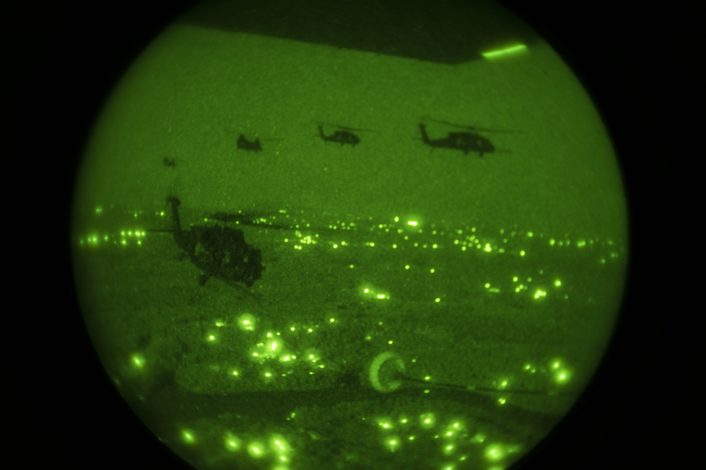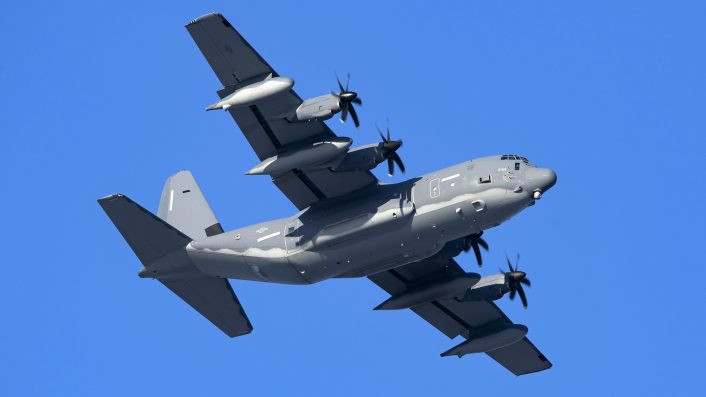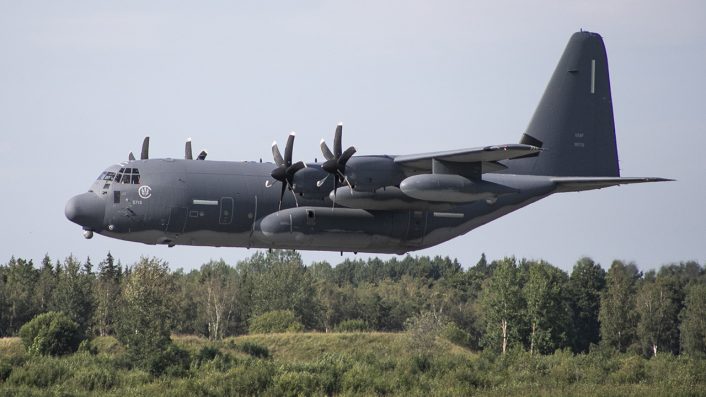MC-130J Commando II Crews Honored for Historic Aerial Refueling Mission During Contingency Operation.
Two MC-130J Commando II crews from the 9th Special Operations Squadron at Cannon Air Force Base, New Mexico, have been awarded the prestigious 2023 Brig. Gen. Ross G. Hoyt Award for their exceptional service during a high-stakes contingency operation directed by the President of the U.S. This honor, established in 1994 by the Air and Space Forces Association, recognizes the top aerial refueling crew from the entire Air Force, including the Air Force Reserve and Air National Guard.
According to an official statement, the awarded crews played a pivotal role in supporting the longest U.S. Army helicopter mission that depended solely on aerial refueling. This historic mission involved helicopter crews flying for over 10 consecutive hours without the possibility of ground refueling, relying entirely on the two MC-130J Commando IIs to deliver fuel in-flight. The complexity and duration of this operation underscored the critical importance of aerial refueling in modern military missions, particularly those involving extended range and limited logistical support.
No additional detail about the helicopter operation supported by the MC-130J has been disclosed however, in 2023, the U.S. military carried out several helicopter raids in Syria and Iraq, the last one of those, in the northern part of Syria, on Sept. 23, 2023, to capture Abu Halil al-Fad’ani, an ISIS Syria Operational and Facilitation official.

U.S. Air Force Capt. Alec Benoit, Chief of Standards and Evaluation for the 9th SOS, expressed pride in the accomplishment, stating, “The 9th SOS, these crews and myself included, were honored to be part of such a historic mission. Having the feat of this air-refueling mission and its crews acknowledged is really awesome.”
During the mission, the 9th SOS crews overcame multiple challenges, including mechanical and communication equipment failures, while also navigating through hostile air defense environments. Despite these obstacles, they successfully delivered over 20,000 pounds of fuel, ensuring the helicopters could complete their mission without interruption. The crews remained airborne for the entirety of the mission, traversing over a thousand miles to support a critical evacuation effort.

“Their professionalism and their capability to perform under pressure in high-stakes environments sets Air Commandos apart from the average person,” said Capt. Benoit, praising his team’s resilience and skill. “These crews did an amazing job.”
The achievement of the 9th SOS crews highlights the rigorous training and readiness of AFSOC units, which are known for their ability to respond rapidly and effectively to unconventional missions. This high level of agility is fostered through comprehensive training programs that ensure aircrews are prepared to tackle complex challenges and generate innovative solutions. U.S. Air Force Lt. Col. John Strube, Commander of the 9th SOS, emphasized the commitment of his squadron, stating, “Our crews train extremely hard every day so when the call comes we’re ready to execute flawlessly. I am extremely honored to lead such fine men and women who are ready at a moment’s notice to ensure American lives are safe. These two crews are a testament to how great the Night Wings truly are.”
According to the U.S. Air Force, recognition with the Hoyt Award underscores the ethos of the Air Commandos: always prepared to respond to the nation’s call. AFSOC’s empowered aircrews represent a competitive advantage, enabling the command to deliver unconventional airpower support to the joint force whenever and wherever needed. The professionalism and dedication of the 9th SOS crews exemplify the commitment of AFSOC to maintaining the highest standards of operational readiness and excellence, the official release explains.
The historic nature of the mission, combined with the challenges faced and overcome by the crews, serves as a powerful reminder of the crucial role aerial refueling plays in extending the reach and effectiveness of U.S. military operations. As Air Force special operations continue to evolve, the ability to conduct complex refueling missions under adverse conditions will remain a vital component of U.S. airpower, ensuring that America’s forces can operate effectively in any environment.
The MC-130J Commando II
The MC-130J Commando II, is a modern special operations variant of the Hercules aircraft. Its main missions include helicopter air-to-air refueling (HAAR) for special operations forces (SOF) helicopters and tilt-rotor aircraft, as well as the infiltration, exfiltration, and resupply of SOF via airdrop or landings on remote airfields. Additionally, it supports Forward Air Refueling Point (FARP) operations, allowing for covert nighttime refueling at locations without accessible fueling stations or where air-to-air refueling is impractical.
Primarily operating at low altitudes and under the cover of darkness, the MC-130J is designed for clandestine missions, reducing the chances of detection and interception by enemy forces.
Equipped with advanced avionics and systems, the MC-130J features a two-pilot flight station with integrated digital displays, an enhanced cargo handling system, and robust defensive measures. It includes 13 multifunctional displays, advanced navigation systems, integrated defensive systems, and sophisticated communication capabilities such as dual SATCOM for voice and data. The aircraft’s powerful turboprop engines with six-bladed composite propellers, improved autopilot, and enhanced fuel and environmental systems increase its operational efficiency and versatility.
Moreover, the MC-130J is fitted with specialized equipment such as the Universal Air Refueling Receptacle Slipway Installation (UARRSI), air refueling pods, an Electro Optical/Infrared (EO/IR) system, and provisions for Large Aircraft Infrared Countermeasures (LAIRCM), making it a highly capable platform for complex special operations missions.


